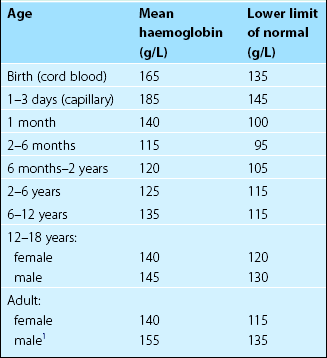11 The normal range for haemoglobin concentration varies in men and women and in different age groups (Table 11.1). The definition of normality requires accurate haemoglobin estimation in a carefully selected reference population. Subjects with iron deficiency (up to 30% in some unselected populations) and pregnant women must be excluded or the lower level of normality will be misleadingly low. Normal haemoglobin ranges may vary between ethnic groups and between populations living at different altitudes.
Introduction and classification
Definition
Oncohema Key
Fastest Oncology & Hematology Insight Engine




